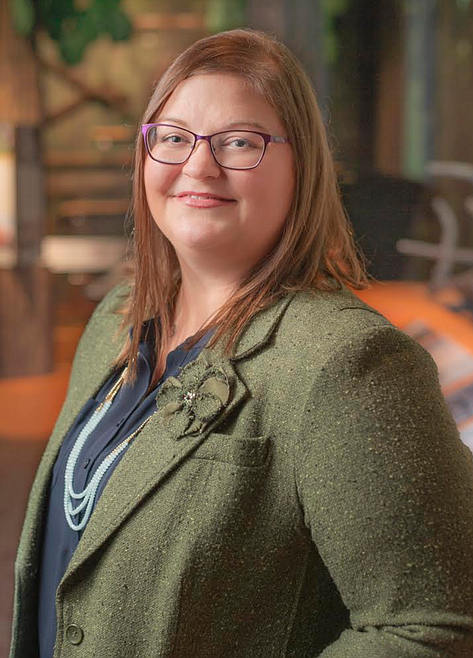Domestic violence numbers remain steady in Shoshone County
WALLACE — In no way is domestic violence strictly a Shoshone County issue. According to the National Coalition Against Domestic Violence, 1 in 3 women and 1 in 4 men in the United States have experienced some form of physical violence by an intimate partner.
On the state level, an estimated 33% of Idaho women and 38.2% of Idaho men experience intimate partner physical violence, intimate partner sexual violence, and/or intimate partner stalking in their lifetimes. When brought before a judge, 42% of charges for violent crime in Idaho are domestic violence-related (domestic assault/battery, stalking/harassment or strangulation).
So while domestic violence is prevalent everywhere, that doesn’t make it any less important to reduce its presence here at home.
In recognition of October being Domestic Violence Awareness month, the News-Press recently sat down with Shoshone County Prosecuting Attorney Keisha Oxendine to learn the latest about domestic violence in our area.
Oxendine recently tabulated the county’s domestic violence statistics, which are derived from the cases her office has received in 2021 (January through October) that include charges involving individuals who are cohabitating as a couple; with or without children.
The current tally is 56 cases — 11 of which involve male victims (roughly 20%). For context, Oxendine explains that these numbers are right in line with what she has seen for the county.
“Last year, there were around 80 cases by the end of 2020. I’d say we’re still on track for that number, maybe a few more,” she said.
With the 2020 COVID-19 pandemic affecting so many aspects of daily life, it makes sense that it would influence these statistics as well.
Oxendine stated that her office did not see a large rise in domestic violence cases during the 2020 phase of the pandemic, but believes that may have something to do with people not reporting the crime.
While the pandemic doesn’t seem to have increased or decreased the number of reported domestic violence cases, it certainly has slowed an already sluggish legal system. Because of the many delays, it has taken longer than normal to file the cases. This is an issue for prosecutors dealing with domestic violence situations because in many cases — time is not on their side.
“Unfortunately what that means is that we have an impact on victims participating in the overall process,” Oxendine said. “Typically, we have a lot of cases in which within a couple of days, we see people wanting to drop charges or want no-contact orders dismissed….we understand that in a lot of times, it takes people multiple times before they actually choose to leave a violent relationship.”
Oxendine attributes this behavior to life stressors such as financial issues or substance abuse in the home; different power and control elements that result in people staying in abusive relationships.
“One of the hardest parts of what we do here in domestic violence prosecution is understanding the dynamics of the situation,” she said.
Whether it be a female or male victim, visible injuries or simply the threat of harm with apparent ability — domestic violence can take many forms. The goal is to stop the violence before serious harm can occur.
“People’s understanding that domestic violence can happen whether you’re a male or female is a lot different now,” Oxendine said. “What we’re seeing is that knowledge spread, resulting in victims of violence feeling more comfortable calling law enforcement — regardless if they are male or female. That's a positive movement forward. In the approach toward domestic violence.”
This is where education comes in and knowing the signs of abuse.
Oxendine believes that education is the key at all different age levels. This could mean seeking out help before the relationship reaches a critical point or simply recognizing red flags and getting out of that relationship.
“You can’t prevent it if people don’t recognize that it is happening,” she said. “I think a lot of time with domestic violence, it’s a slow progression. It’s small little things and they are kind of immersed in it. That violence piece doesn’t necessarily happen right away.”
In the courtroom, Oxendine emphasizes rehabilitation for offenders to minimize the risk of the crime occurring in the future or getting more serious with physical injuries.
“Statistically speaking, when you start getting into that level of violence, that’s an escalation that likely could result in a domestic violence homicide,” Oxendine said.
On the streets, Oxendine explains that law enforcement has their own method of determining the severity of a domestic violence incident.
“We do have a risk assessment tool for law enforcement for them to use in their investigations. Essentially, it’s just a measure in which they note certain things that a victim or perpetrator say when they are interviewing them. Then depending on the number of risk factors, it elevates the level of dangerousness.”
This assessment helps prosecutors like Oxendine determine what the goals are of the defendant and how likely the offender committed or will commit physical violence.
For questions about a particular case, contact the Shoshone County Prosecutor’s Office at 208-752-1106 and ask for the victim witness coordinator.
For any emergency situations, call 911.

